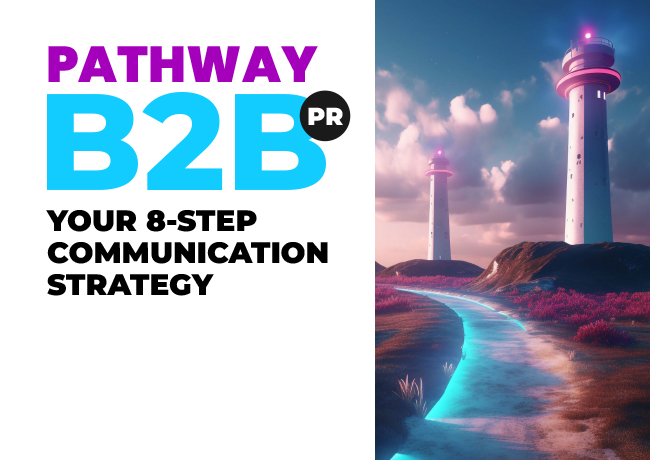
Finding your tech tribe: 5 steps to identifying your ideal target audience
Key takeaways
Identifying your ideal target audience is essential to driving growth, fostering customer loyalty, and building a brand that resonates deeply. The challenge lies in navigating through a vast pool of potential customers to find those who will not only purchase your product but also champion it.
Our five steps walk you through:
- identifying your target audience,
- market segmentation,
- analysing competitors,
- evaluating how well your product or sevice fits each segment,
- testing and refining your campaign messaging.
By the end, you’ll be equipped with the insights needed to ensure your marketing efforts are focused and impactful.
1 Identify your target audience:
Understanding your target audience’s demographics, needs, and preferences helps tailor your positioning statement and messaging to appeal directly to them. You can use a variety of methods to identify your ideal target audience, including:
a. Review your current customer base:
- Look for common characteristics and interests.
- Who, within the organisation buys your product or service and how they benefit from it.
- Use sales data, customer surveys, and feedback to identify patterns in purchasing behaviour and preferences.
b. Create detailed customer personas:
- Include demographic information such as age, gender, education, income.
- Then add psychographic information like interests, hobbies, values, and lifestyle.
Personas will help you and your wider teams to visualise your ideal customer, making it easier to tailor marketing and sales strategies.
c. Conduct market research:
- Utilise online tools and platforms to gather data on potential customers.
- Tools like Google Analytics, social media insights, and market research reports provide valuable customer behaviour and trends data.
Research can add a layer of robust insight to your intelligence.
d. Qualitative data:
- Finally, consider conducting surveys, focus groups, or interviews to gather qualitative data.
2Segment your market:
Break down your market into smaller segments based on shared characteristics. This could be based on demographics, buying motivations, geographical locations, or behaviour. Market segmentation allows you to target your marketing efforts more precisely to groups more likely to purchase from you.
Segmentation can be done in various ways – and not always in ways you would immediately think of. Here are some additional ideas for segmentation.
a. Needs-based segmentation:
- Segmenting the market based on customers’ specific needs and wants.
- Uncover niches within a market that can be served with specialised products or adaptations of existing products.
b. Value-based segmentation:
- This involves segmenting customers based on the economic value they bring to the business.
- High-value customers can be targeted with premium service offerings or loyalty programmes, whereas lower-value segments may be targeted with cost-efficient marketing strategies.
c. Life stage segmentation:
- Organising customers by stages in the career cycle, from recruit to CEO.
- Each stage has unique needs and purchasing habits that can be specifically addressed.
d. Technographic segmentation:
- Segmenting customers based on their use and adoption of technology.
- Tech-savvy users might be early adopters of new digital products or services, while less tech-savvy users may require more traditional products or engagement strategies.
3Analyse competitors:
Study your competitors to see who they are targeting and how they are positioning themselves. This can provide insights into gaps in the market or opportunities to differentiate your brand. Look at their customer reviews and social media activity to see what kinds of customers are engaging with them. Analysing competitors is critical for understanding your market position, identifying opportunities for differentiation, and anticipating market trends. Here are both traditional and novel approaches to conducting competitor analysis:
a. SWOT analysis:
- Strengths, Weaknesses, Opportunities, Threats (SWOT) analysis is a time-tested method used to evaluate both your own company and your competitors.
- Assess the strengths and weaknesses of your competitors and identify opportunities where you can capitalise and threats that may pose challenges.
This analysis helps you understand where your competitors are performing well and where they’re vulnerable.
b. Product comparisons:
- Conducting direct comparisons of your products or services with those of your competitors can reveal differentiators or areas needing improvement.
- Examine features, quality, price points, customer service, and additional benefits.
- These comparisons can be showcased in marketing materials to highlight why customers should choose your product over others.
c. Digital footprint analysis:
- Analysing a competitor’s online presence and digital strategy can provide deep insights into their marketing tactics, customer engagement, and brand positioning.
- Tools like SEMrush, Ahrefs, or SimilarWeb can analyse website traffic, SEO strategies, content marketing effectiveness, and social media presence.
d. Sentiment analysis:
- Utilising AI tools to perform sentiment analysis on social media mentions, reviews, and other online interactions related to your competitors can give you a nuanced view of public perception of them.
- Sentiment analysis helps you identify strengths and weaknesses in customer relationships and can inform your strategies to improve customer satisfaction.
e. Predictive and big data analytics:
- Leveraging big data analytics and predictive modelling can help forecast future trends based on current data.
- This could include predicting competitor moves, market shifts, or changing consumer preferences.
- By analysing large data sets, companies can anticipate changes and strategically position themselves to take advantage of emerging opportunities before competitors do.
By combining traditional and novel methods, you can get clear insight into the competitive landscape and better position your business for growth.
Evaluate product or service fit:
- Assess how well your product or service meets the needs of the identified target segments.
- Consider if modifications or enhancements are needed to serve this audience better.
- Think about the problems your product or service solves and match these with the needs and desires of your potential customers.
Test and refine:
- After defining your target audience, test your marketing messages and campaigns on smaller segments to see how they respond.
- Continuously gather and analyse data on the effectiveness of your strategies.
- Refine your target audience as needed based on real-world performance and feedback.
- Understanding your ideal target audience is an ongoing process of refinement. As you work through these five steps—from analysing your existing customer base to continually testing and adjusting—you’ll gain a deeper insight into your audience’s changing needs. This process is not just about understanding your customers; it’s also about aligning your brand with the right audience. Staying responsive to your audience’s needs and making data-driven decisions will allow you to build a strong, lasting relationship with your customers, paving the way for mutual growth and innovation.
Are you ready to refine your approach and unlock your tech brand’s full potential? We’re ready to support you in building your communication strategy. Find out more about our process by downloading our Pathway guide: Your 8 step communication strategy.

Your 8-Step Communication Strategy Guide
A comprehensive guide to delivering your business goals using intelligent and relevant messaging.
Our insights
Subscribe to our updates
Stay up to date with the latest insights, case studies and PR guides.

